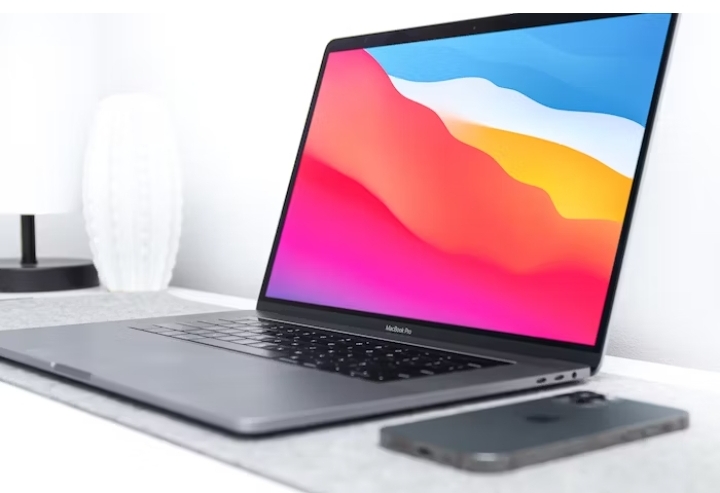AV1 vs. h265 (HEVC) vs. VP9: What Is the Difference Between These Compression Standards?

AV1 vs. h265 (HEVC) vs. VP9: What Is the Difference Between These Compression Standards?
In today’s digital age, video content has become an integral part of our lives. From streaming platforms to video conferences, the need for efficient video compression technologies is ever-growing. AV1, h265 (HEVC), and VP9 are three prominent video compression standards that have gained significant attention in the industry. This article aims to explore the differences between these compression standards and help you understand their unique features and applications.
1. Introduction
Video compression is the process of reducing the size of video files while maintaining acceptable visual quality. It enables efficient storage, transmission, and streaming of videos over various platforms. AV1, h265 (HEVC), and VP9 are codecs specifically designed for video compression, each with its strengths and weaknesses.
2. What are AV1, h265 (HEVC), and VP9?
AV1, h265 (HEVC), and VP9 are video compression standards developed by different organizations to provide efficient video encoding and decoding. Here’s a brief overview of each standard:
AV1: AV1, short for AOMedia Video 1, is an open-source video codec developed by the Alliance for Open Media (AOMedia). It was introduced as a royalty-free alternative to existing video codecs, aiming to provide better compression efficiency and lower bandwidth requirements.
h265 (HEVC): h265, also known as High-Efficiency Video Coding (HEVC), is a video compression standard developed by the Joint Collaborative Team on Video Coding (JCT-VC). It offers improved compression efficiency compared to its predecessor, h264 (AVC), making it widely adopted in various applications.
VP9: VP9 is a video codec developed by Google as an open-source alternative to proprietary codecs. It was designed to provide high-quality video compression with reduced bandwidth requirements, making it suitable for streaming and web-based applications.
3. Compression Efficiency
When comparing AV1, h265 (HEVC), and VP9, compression efficiency is a key aspect to consider. Let’s delve into three factors that determine the compression efficiency of these codecs.
3.1 Bitrate Reduction
Bitrate reduction refers to the ability of a codec to reduce the size of a video file while maintaining acceptable visual quality. AV1, h265 (HEVC), and VP9 all excel in this aspect, offering significant bitrate savings compared to older codecs. However, AV1 often outperforms h265 (HEVC) and VP9 in terms of bitrate reduction, especially for higher resolutions and lower bitrates.
3.2 Visual Quality
While bitrate reduction is important, it shouldn’t come at the cost of visual quality. AV1, h265 (HEVC), and VP9 all strive to maintain high visual quality during compression. However, the visual quality can vary depending on the content being compressed and the encoding settings used. In general, h265 (HEVC) and AV1 tend to provide better visual quality compared to VP9 at similar bitrates. AV1, in particular, employs advanced coding techniques and algorithms to deliver superior visual quality even at lower bitrates.
3.3 Performance
Performance refers to the encoding and decoding speed of a video codec. This aspect is crucial, especially in real-time applications such as video conferencing or live streaming. VP9 generally offers faster encoding and decoding speeds compared to AV1 and h265 (HEVC). However, it’s important to note that the performance can vary depending on the hardware and software implementations of the codecs.
4. Encoding and Decoding Complexity
The complexity of encoding and decoding is another factor to consider when comparing AV1, h265 (HEVC), and VP9. Encoding complexity refers to the computational resources required to compress a video, while decoding complexity pertains to the resources needed to decompress and play back the encoded video. AV1 is known to have a higher encoding and decoding complexity compared to h265 (HEVC) and VP9. This complexity can result in longer encoding times and higher computational requirements, especially for high-resolution videos.
5. Hardware and Software Support
The availability of hardware and software support is an essential aspect for widespread adoption of video codecs. h265 (HEVC) has gained significant hardware support in recent years, making it compatible with a wide range of devices, including smartphones, TVs, and streaming devices. VP9 also enjoys considerable hardware support, especially in web browsers and streaming platforms. On the other hand, AV1, being a relatively newer standard, is still in the process of gaining widespread hardware support. However, software-based decoding is widely available for all three codecs, allowing playback on various devices.
6. Licensing and Royalties
Licensing and royalties are important considerations, especially for commercial applications and businesses. AV1 stands out in this aspect as it is an open-source codec developed with the goal of being royalty-free. This means that no licensing fees are required for using AV1, making it an attractive option for content creators and service providers. On the other hand, both h265 (HEVC) and VP9 may involve licensing fees and royalties depending on the specific use cases and implementations.
7. Adaptive Streaming and Video Platforms
Adaptive streaming is a technique used by video platforms to dynamically adjust the quality of the video based on the viewer’s available bandwidth and device capabilities. All three codecs, AV1, h265 (HEVC), and VP9, are compatible with adaptive streaming. However, the choice of codec may depend on factors such as the platform’s infrastructure, device support, and desired balance between video quality and bandwidth utilization.
8. Comparison in Various Applications
AV1, h265 (HEVC), and VP9 find applications in different domains. Let’s explore how these codecs perform in various scenarios:
8.1 Video Streaming
In the realm of video streaming, all three codecs are widely used. AV1 offers excellent compression efficiency, making it ideal for delivering high-quality streaming content while reducing bandwidth requirements. h265 (HEVC) is also commonly used, especially in platforms that prioritize compatibility with existing hardware and software. VP9, with its hardware support and compatibility with web browsers, remains a popular choice for web-based video streaming.
8.2 Video Conferencing
Video conferencing applications require low-latency, real-time video encoding and decoding. In this context, VP9 shines due to its relatively lower encoding and decoding complexity, resulting in faster processing and reduced latency. AV1 and h265 (HEVC) are also used in video conferencing, especially in applications where higher visual quality is desired, even at the expense of slightly higher encoding and decoding complexity.
8.3 Broadcasting
For broadcasting applications, h265 (HEVC) is widely adopted due to its excellent compression efficiency and compatibility with existing broadcast infrastructure. AV1 is also gaining traction in this domain, particularly for internet-based broadcasting and over-the-top (OTT) services. VP9, with its hardware support and web compatibility, finds applications in web-based broadcasting platforms.
8.4 Storage and Transmission
When it comes to storage and transmission of videos, AV1 stands out for its superior compression efficiency, allowing for reduced file sizes without compromising visual quality. h265 (HEVC) is also commonly used in this domain, thanks to its widespread hardware support and compatibility with various devices. VP9, with its web compatibility, finds applications in web-based storage and transmission, particularly for online platforms.
9. Pros and Cons of AV1, h265 (HEVC), and VP9
To summarize the strengths and weaknesses of AV1, h265 (HEVC), and VP9, let’s take a closer look at each codec:
9.1 AV1
Pros:
Excellent compression efficiency, leading to reduced bandwidth requirements.
Open-source and royalty-free, making it an attractive option for content creators.
High visual quality, even at lower bitrates.
Cons:
Higher encoding and decoding complexity, resulting in longer processing times.
Limited hardware support compared to h265 (HEVC) and VP9.
9.2 h265 (HEVC)
Pros:
Improved compression efficiency compared to previous codecs.
Widespread hardware support across various devices.
Compatibility with existing broadcast infrastructure.
Cons:
Licensing fees and royalties may be applicable in certain use cases.
Encoding and decoding complexity, although lower than AV1, may still be higher compared to VP9.
9.3 VP9
Pros:
Fast encoding and decoding speeds, suitable for real-time applications.
Hardware support and compatibility with web browsers.
Widely used in web-based video streaming.
Cons:
Compression efficiency may not be as high as AV1 or h265 (HEVC).
Limited hardware support compared to h265 (HEVC).
10. Conclusion
In conclusion, AV1, h265 (HEVC), and VP9 are three prominent video compression standards that offer unique features and advantages. AV1 excels in compression efficiency and visual quality, while h265 (HEVC) is widely adopted and offers compatibility with existing infrastructure. VP9, with its fast encoding and decoding speeds, finds applications in web-based streaming platforms. The choice of codec depends on specific requirements, such as desired visual quality, hardware support, encoding and decoding complexity, and licensing considerations.
Frequently Asked Questions (FAQs)
What is the main difference between AV1, h265 (HEVC), and VP9?
AV1, h265 (HEVC), and VP9 are video compression standards that differ in compression efficiency, visual quality, encoding and decoding complexity, hardware support, and licensing.
Which codec offers the best compression efficiency?
AV1 generally offers the best compression efficiency among the three codecs, providing significant bitrate reduction while maintaining high visual quality.
Is AV1 compatible with existing hardware?
AV1 is still in the process of gaining widespread hardware support. However, software-based decoding is widely available, allowing playback on various devices.
Does h265 (HEVC) require licensing fees?
Depending on the specific use cases and implementations, h265 (HEVC) may involve licensing fees and royalties. It’s important to consider the licensing requirements and agreements when using h265 (HEVC) in commercial applications.
Which codec is suitable for real-time video conferencing?
VP9 is often preferred for real-time video conferencing due to its lower encoding and decoding complexity, resulting in faster processing and reduced latency.
What are the advantages of VP9 for web-based streaming?
VP9 offers hardware support and compatibility with web browsers, making it a popular choice for web-based video streaming platforms.
Can AV1 deliver high visual quality at lower bitrates?
Yes, AV1 employs advanced coding techniques and algorithms to provide high visual quality even at lower bitrates, making it an excellent choice for bandwidth-constrained scenarios.
Which codec is commonly used for broadcasting?
h265 (HEVC) is widely adopted in broadcasting applications due to its excellent compression efficiency and compatibility with existing broadcast infrastructure.
Is AV1 a royalty-free codec?
Yes, AV1 is developed as an open-source and royalty-free video codec, making it attractive for content creators and service providers.
What are the key considerations when choosing a video compression standard?
Key considerations include compression efficiency, visual quality, encoding and decoding complexity, hardware and software support, licensing requirements, and specific application requirements.
In conclusion, AV1, h265 (HEVC), and VP9 are distinct video compression standards with varying strengths and weaknesses. Understanding their differences in terms of compression efficiency, visual quality, complexity, hardware support, and licensing is essential in choosing the right codec for specific applications. Each codec has its unique advantages and considerations, and the decision should be based on the specific needs, infrastructure, and goals of the project or platform.







